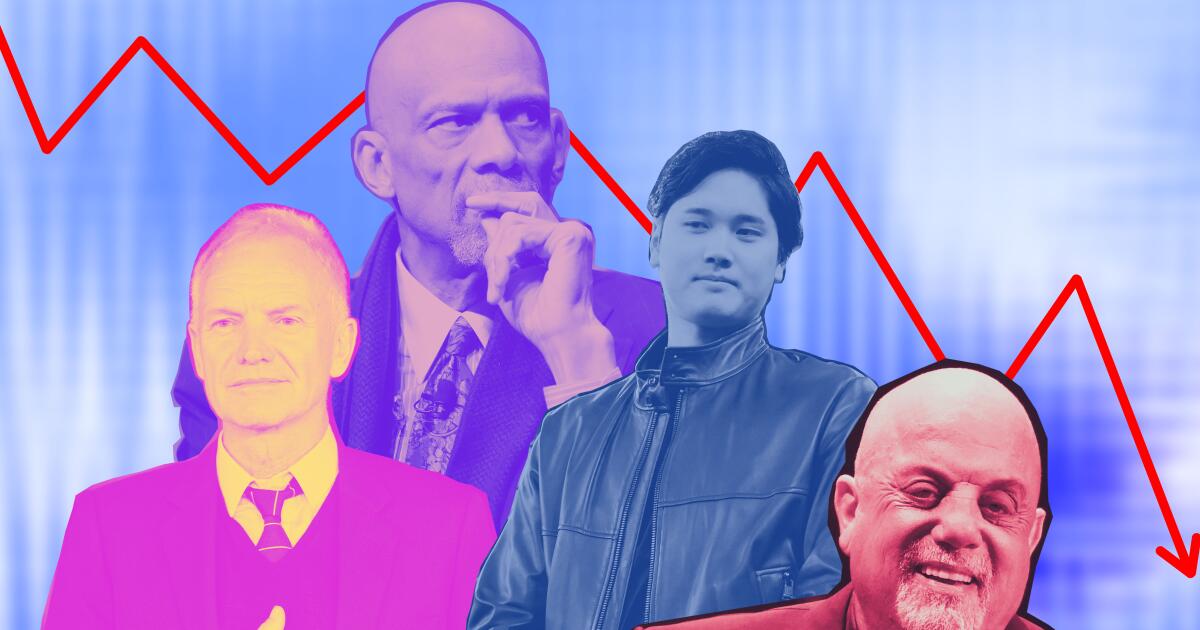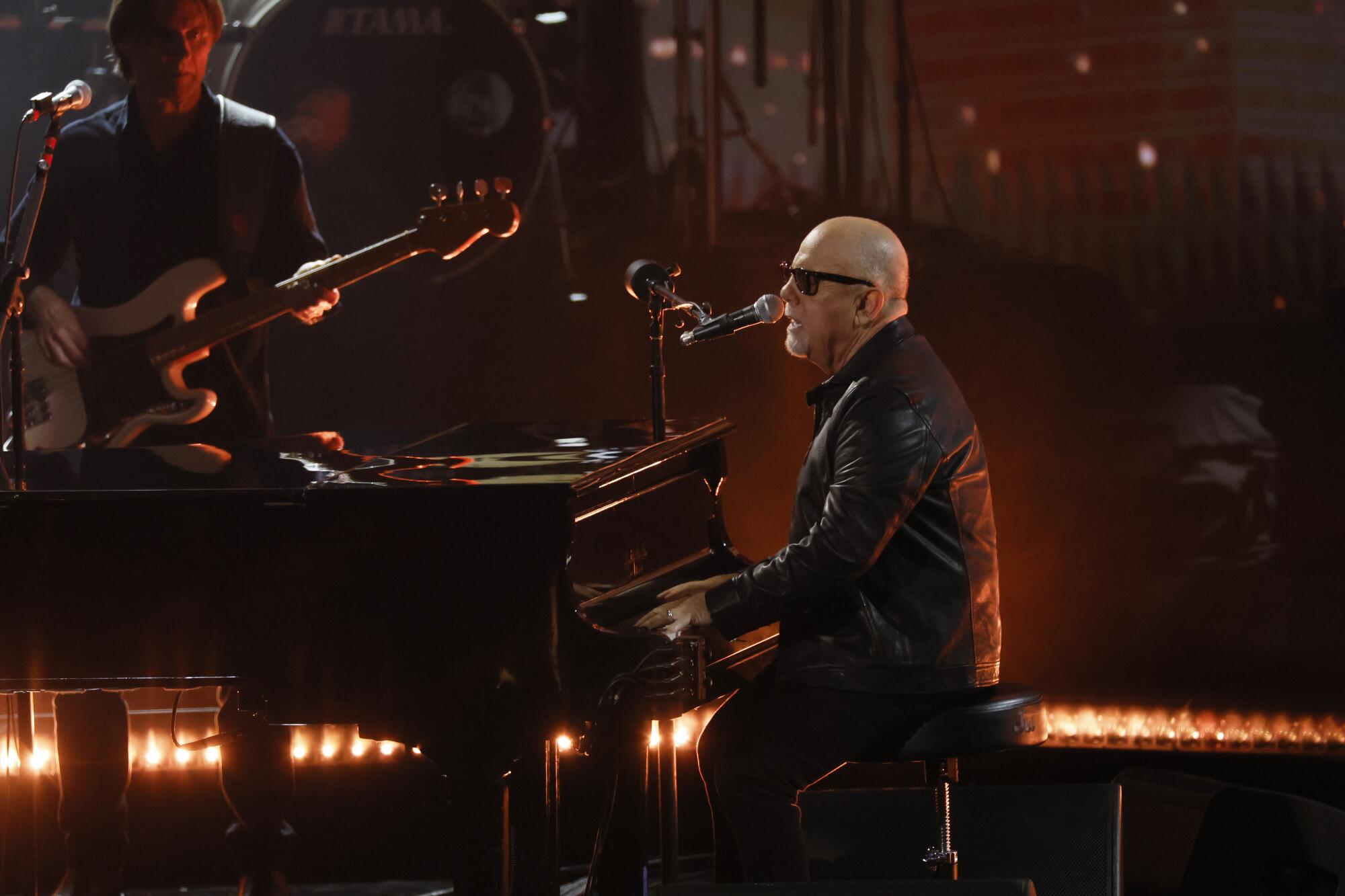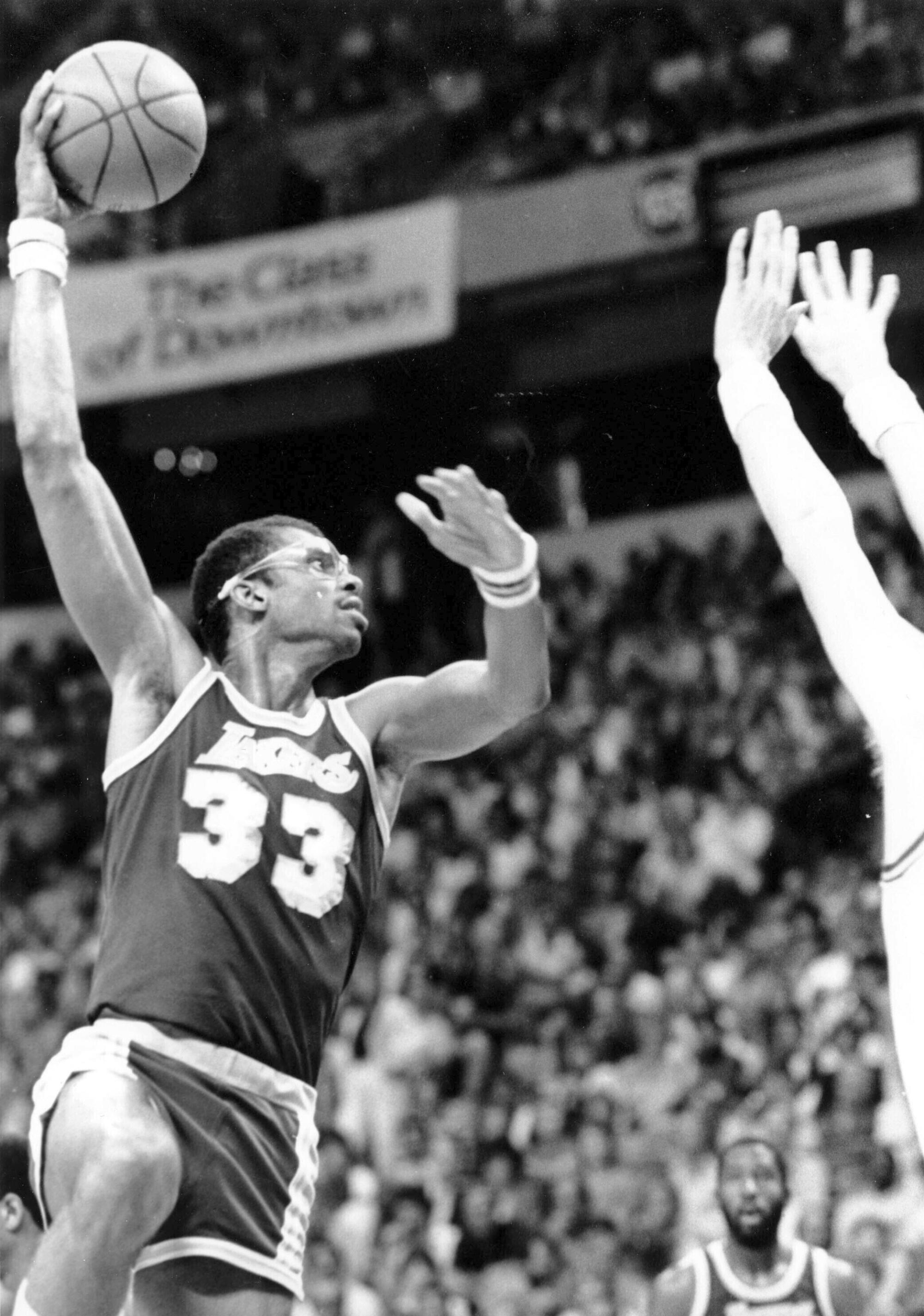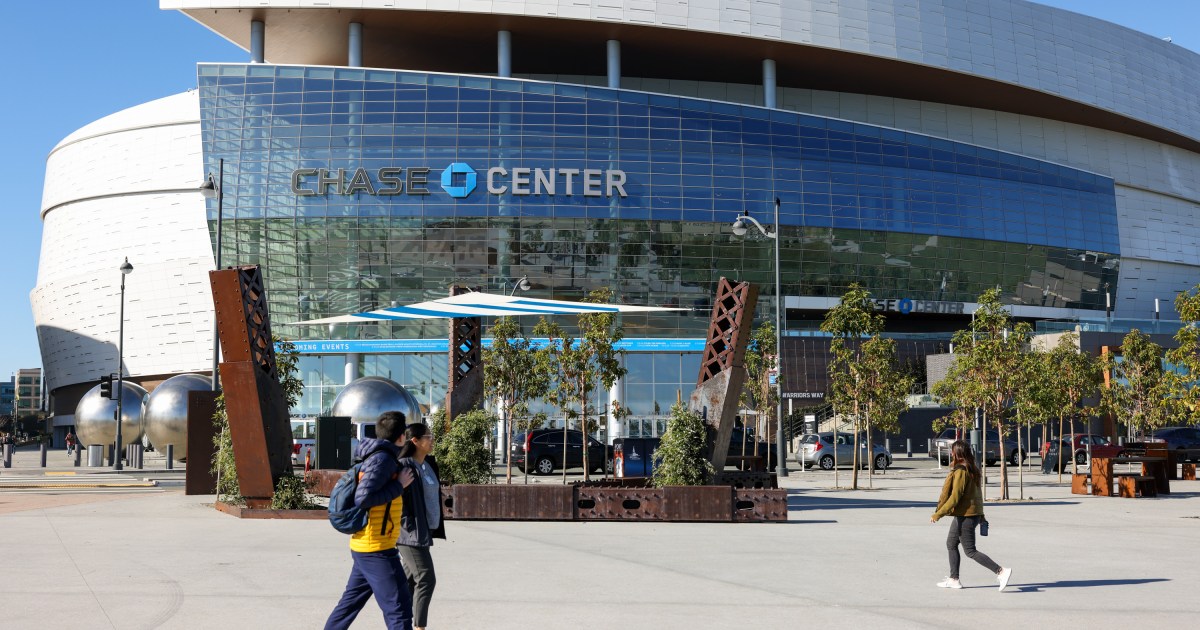Business
How athletes and entertainers like Shohei Ohtani get financially duped by those they trust

R. Allen Stanford is among the most brazen white-collar criminals — and he’s paying dearly for it. The former financier is in the 14th year of a 110-year prison sentence after being convicted in 2012 for selling $7 billion in fraudulent certificates of deposits in the Caribbean island of Antigua.
He also was required to pay a judgment of $5.9 billion, much of which was intended to go to victims of his crimes. Among those affected by his elaborate Ponzi scheme were seven Major League Baseball stars: Greg Maddux, Johnny Damon, Bernie Williams, J.D. Drew, Andruw Jones, Jay Bell and Carlos Peña.
The players invested in certificates of deposit offered by Stanford’s company, and it was that easy to have their bank accounts frozen in 2009 by the U.S. Securities and Exchange Commission while authorities investigated the case despite putting their trust in advisors with stellar reputations and a wealth of experience.
Damon complained during spring training that year that he couldn’t pay bills and told a personal trainer that he’d pay him when “all this stuff gets resolved.”
The questions lingered for months: How long would the accounts be frozen and would funds be confiscated?
“This certainly shakes up every athlete out there,” Robert Boland, professor of sports business at New York University, said at the time. “They’re all thinking: ‘Who’s guarding my money?’ ”
The Stanford episode might have prompted a reckoning inside MLB clubhouses, but the lesson didn’t stick with the entire next generation of players.
Shohei Ohtani has so far been cleared of wrongdoing in the recent illegal gambling probe that resulted in his interpreter, Ippei Mizuhara, being charged with bank fraud for stealing $16 million from Ohtani’s bank account to pay gambling debts. But the Dodgers and former Angels superstar was unaware of the theft until investigators uncovered wire transfers from his account to a bookie and Mizuhara admitted to Ohtani after a Dodgers team meeting March 20 in Seoul that he’d stole the money.
Ohtani was repeatedly described by authorities as a “victim,” but the extent to which the Japanese player was seemingly oblivious about his personal finances and blindly trusting Mizuhara is jarring at first glance. The federal complaint also says that Ohtani’s high-powered agent and financial advisors from Creative Artists Agency allowed Mizuhara to dissuade them from overseeing the account from which he stole.
“In this particular situation, it’s somebody who’s relying on someone to interpret an entire language to them, so they could be taking advantage of documents, wire transfers, all kinds of things that the other person doesn’t understand but is trusting that they have their best interests at heart,” said Kristin Lee, owner of the athletic and entertainment business management firm KLBM. “That’s rather predatory, and blatantly taking advantage of a very vulnerable person.”
Wealth management experts say athletes and entertainers who squander enormous sums fall into three interconnected buckets: They are naive about or inattentive to their finances; they make risky investments; they overspend on family, friends and expensive toys.
An eye-opening Sports Illustrated study in 2009 that included interviews with athletes, agents and financial advisors found that 78% of former NFL players had gone bankrupt or were under financial stress within two years of retirement and 60% of NBA players were broke within five years of retirement.
“Only those you trust completely can rip you off completely.”
— Diana B. Henriques, financial journalist
Wealthy athletes in nearly every sport as well as famous entertainment figures have experienced the same misfortune. NFL quarterback Mark Sanchez and MLB pitcher Jake Peavy were fleeced of millions of dollars by financial advisor Ash Narayan, who was sentenced in 2020 to 37 months in federal prison. Narayan gained the players’ trust because he was active in the Fellowship of Christian Athletes.
Former heavyweight champion Mike Tyson, once worth about $400 million, declared bankruptcy in 2003 when he was still boxing. Prominent entertainment figures have been fleeced by business managers (Judy Garland, Leonard Cohen, Alanis Morissette) or fallen prey to questionable investment opportunities (Robert De Niro, Ben Stiller, Jack Nicholson).
“It’s a heartbreaking tale that’s played out time and time and time again,” said Diana B. Henriques, financial journalist and author of “The Wizard of Lies: Bernie Madoff and the Death of Trust.” “Regardless of the industry, a person’s lucrative talent, lack of financial expertise and sudden access to wealth primes them as a candidate for a scam.
“Whether you’re an athlete, artist, surgeon or even a Silicon Valley entrepreneur, a con artist’s ideal victim is someone who knows very little about money but has a great deal of it,” she added. “You have a brilliant career that’s taken off and you’re making a ton of money from something you love to do, but you’ve never had to deal with this amount of wealth before.
“So it’s tempting when someone says, ‘Let me make it simple for you. Let me handle this messy, complex, confusing stuff so you can focus all your creative energy on being great and getting greater.’ ”
This strategic positioning of finances as a distraction to a star’s performance in their chosen field makes them particularly susceptible. Ohtani acknowledged as much in his only public comments since Mizuhara was charged with bank fraud: “I’m very grateful for the Department of Justice’s investigation,” he said. “For me personally, this marks a break from this, and I’d like to focus on baseball.”
Dodgers designated hitter Shohei Ohtani walks to the dugout after being stranded at second base in the eighth inning against the Washington Nationals on Wednesday.
(Robert Gauthier / Los Angeles Times)
In fact, it isn’t uncommon for the rich and famous to be blissfully unaware of their money’s movements. Take the musician Sting, who was notified by an anonymous tip that his former accountant, Keith Moore, had stolen more than $9 million from the British rock star over four years in order to invest in global schemes and stave off personal bankruptcy.
“He’d created something like 70 different bank accounts in different countries,” Sting said in a 2002 interview with the Independent. “And the money was coming in different denominations — Deutschemarks, Japanese yen — from different sources … touring, recording, publishing, merchandising, TV appearances. So for that kind of money to be siphoned away is not that surprising. And since it took forensic accountants about two years to sort through the complexities, how could a bass player figure it out?”
In cases like Sting’s, “It’s a fractional deceit that happens over the years, where somebody skims off a little bit here and there from a bunch of different types of accounts with different assets in them, and it adds up to a lot of stolen money,” Lee said.
Such complex financial structures often are entrusted to a family member or close friend. Comedian and actor Dane Cook had millions stolen by his half-brother Darryl McCauley, who was convicted of larceny, embezzlement and forgery. Singer-songwriter Jewel said last year on “The Verywell Mind” podcast that her mother and former manager, Nedra Carroll, stole $100 million from her.
“Only those you trust completely can rip you off completely,” Henriques said.
Billy Joel sued his ex-brother-in-law and former manager Frank Weber for unauthorized loans to Weber’s companies, secret investments in speculative ventures and mortgages on the copyrights for his songs — losses that initially went unnoticed and totaled $30 million.
“It was much more of an emotional betrayal for me than financial, because this was somebody I trusted so much,” Joel said in a 2013 interview with the New York Times Magazine. “I always had this sense that OK, I’m an artist and I shouldn’t have to be concerned about something as banal as money, which is baloney. It’s my job. It’s what I do. I didn’t pay any attention to it, and I trusted other people, and I got screwed.”

Billy Joel performs at the 66th Grammy Awards at Crypto.com Arena on Feb. 4.
(Robert Gauthier / Los Angeles Times)
Athletes started signing contracts worth millions in the 1980s. It’s no coincidence that financial predators began to gravitate toward them around that time. One of the earliest instances involved Lakers great Kareem Abdul-Jabbar and several other NBA stars, including Ralph Sampson and Alex English.
Dubious investments initiated by the players’ former business manager, Thomas M. Collins, included Arabian horses and oil wells in addition to hotel and restaurant ventures.
The prize acquisition was the venerable Balboa Inn in Newport Beach, where Errol Flynn, Humphrey Bogart, Gary Cooper and other Hollywood stars once gathered. But the partnership that owned that hotel and others went bankrupt.
Abdul-Jabbar sued Collins, his sole representative for six years, and others for $59 million, charging negligence, fraud and breach of trust, triggering a flurry of legal action.
Collins countersued, claiming that Abdul-Jabbar owed him $382,050 in unpaid commissions and fees. English sued Abdul-Jabbar, and had him served with papers in the Lakers’ locker room. Abdul-Jabbar added English to his suit against Collins and had those papers served while English sat on the bench during a game.

Lakers center Kareem Abdul-Jabbar shoots a sky hook in a game against the Utah Jazz in Las Vegas on April 5, 1984.
(Lennox McLendon / Associated Press)
The players had given Collins power of attorney in administering their financial affairs even though his only background in finance was an entry-level position at an investment information service. Ed Butowsky, managing partner of wealth management advisory firm Chapwood Investments, said giving power of attorney to anybody is usually foolish.
“The responsibility lies with these athletes, they should not parcel out that responsibility,” he said. “They should know where their money is, how much they have, where the account statements go and so on. If they don’t, it’s their own fault.”
NBA stars Antoine Walker, Latrell Sprewell, Vin Baker and Shawn Kemp each spent close to $100 million not long after retiring in the 2000s, much of it from excessive partying and showering family and friends with cash. And let’s not forget Allen Iverson, who went broke despite earning nearly $200 million in salary and endorsements and is hanging on to reach his 55th birthday seven years from now when he will receive $32 million from Reebok, thanks to a lifetime contract he signed with the shoe company in 2001.
Those cautionary tales have made an impact, Butowsky said. Fewer athletes and entertainment figures are spending ungodly amounts on jewelry, cars and handouts to friends.
“You have some one-off situations, but because of the publicity, people have become a lot more careful about wild expenditures,” Butkowsky said. “But they are still trusting the wrong people to make financial decisions.”
Financial planners often suggest that wealthy clients create a diverse portfolio. Athletes and entertainers often make the mistake of putting too much money into one venture. Butowsky calls it the “front row” mistake.
“A lot of them see some entrepreneur sitting in the front row at a basketball game and want to know what they did to make it,” he said. “But the idea that they are going to replicate that? It’s not going to happen. The very same thing that got a few people rich gets 20 to 30 times that many people broke.”
Though technological advancements have made it arguably harder for scammers to get away with thefts — “People probably used to be able to shuffle papers around, white things out and make photocopies, but now, everything is maintained in some sort of online system with a solid trail around it,” Lee said — athletes and entertainers still need to stay vigilant to prevent themselves from becoming the next headline-making victim.
“These dubious schemes are absolutely not going away,” Henriques said. “Part of it is that we devote so little attention to basic financial literacy in this country. We don’t train young people to have even the most basic knowledge about how finance works. … No one wants to hear that with great wealth comes great responsibility, but it’s true.”
Sometimes investors are fortunate. The seven MLB players who unwittingly invested $10 million in Stanford’s phony certificates of deposit in 2008 sold their shares before the Ponzi scheme collapsed, according to Kevin Sadler, lead counsel for the receivership appointed by the court to recover as much of Stanford’s ill-gotten gains as possible.
Maddux, a Hall of Fame pitcher who earned $153.8 million during a 23-year career, made the largest profit: $169,000 in 10 months on an investment of $3.5 million. Damon made the least, $70 in two months on an investment of $400,000.
However, the players were among hundreds of investors who had bank accounts frozen until they agreed to return their profits to the receivership. All seven players gave back their profits in December 2009, Sadler said, a small amount of the $2.7 billion that will have been recovered by this summer. About 45% of the principal investments stolen by Stanford will have been returned to the approximately 18,000 fraud victims.
“Starting at zero, to be able to return this much, I really do think it is remarkable,” Sadler said. “It’s taken 15 years, so I don’t think saying the recovery is monumental is overkill or hype.”
In most cases involving fraudulent investments, little if anything is recovered, he said. And when it comes to athletes and entertainers with immense earnings, the money lost is often well into the millions.
“How does a person blow that much money?” Sadler said. “You can do it. It’s possible. You don’t even have to try that hard. You can actually blow it quite easily.”

Business
As Delta Reports Profits, Airlines Are Optimistic About 2025

This year just got started, but it is already shaping up nicely for U.S. airlines.
After several setbacks, the industry ended 2024 in a fairly strong position because of healthy demand for tickets and the ability of several airlines to control costs and raise fares, experts said. Barring any big problems, airlines — especially the largest ones — should enjoy a great year, analysts said.
“I think it’s going to be pretty blue skies,” said Tom Fitzgerald, an airline industry analyst for the investment bank TD Cowen.
In recent weeks, many major airlines upgraded forecasts for the all-important last three months of the year. And on Friday, Delta Air Lines said it collected more than $15.5 billion in revenue in the fourth quarter of 2024, a record.
“As we move into 2025, we expect strong demand for travel to continue,” Delta’s chief executive, Ed Bastian, said in a statement. That put the airline on track to “deliver the best financial year in Delta’s 100-year history,” he said.
The airline also beat analysts’ profit estimates and said it expected earnings per share, a measure of profitability, to rise more than 10 percent this year.
Delta’s upbeat report offers a preview of what are expected to be similarly rosy updates from other carriers that will report earnings in the next few weeks. That should come as welcome news to an industry that has been stifled by various challenges even as demand for travel has rocketed back after the pandemic.
“For the last five years, it’s felt like every bird in the sky was a black swan,” said Ravi Shanker, an analyst focused on airlines at Morgan Stanley. “But it appears that this industry does have its ducks in a row.”
That is, of course, if everything goes according to plan, which it rarely does. Geopolitics, terrorist attacks, air safety problems and, perhaps most important, an economic downturn could tank demand for travel. Rising costs, particularly for jet fuel, could erode profits. Or the industry could face problems like a supply chain disruption that limits availability of new planes or makes it harder to repair older ones.
Early last year, a panel blew off a Boeing 737 Max during an Alaska Airlines flight, resurfacing concerns about the safety of the manufacturer’s planes, which are used on most flights operated by U.S. airlines, according to Cirium, an aviation data firm.
The incident forced Boeing to slow production and delay deliveries of jets. That disrupted the plans of some airlines that had hoped to carry more passengers. And there was little airlines could do to adjust because the world’s largest jet manufacturer, Airbus, didn’t have the capacity to pick up the slack — both it and Boeing have long order backlogs. In addition, some Airbus planes were afflicted by an engine problem that has forced carriers to pull the jets out of service for inspections.
There was other tumult, too. Spirit Airlines filed for bankruptcy. A brief technology outage wreaked havoc on many airlines, disrupting travel and resulting in thousands of canceled flights in the heart of the busy summer season. And during the summer, smaller airlines flooded popular domestic routes with seats, squeezing profits during what is normally the most lucrative time of year.
But the industry’s financial position started improving when airlines reduced the number of flights and seats. While that was bad for travelers, it lifted fares and profits for airlines.
“You’re in a demand-over-supply imbalance, which gives the industry pricing power,” said Andrew Didora, an analyst at the Bank of America.
At the same time, airlines have been trying to improve their businesses. American Airlines overhauled a sales strategy that had frustrated corporate customers, helping it win back some travelers. Southwest Airlines made changes aimed at lowering costs and increasing profits after a push by the hedge fund Elliott Management. And JetBlue Airways unveiled a strategy with similar aims, after a less contentious battle with the investor Carl C. Icahn.
Those improvements and industry trends, along with the stabilization of fuel, labor and other costs, have created the conditions for what could be a banner 2025. “All of this is the best setup we’ve had in decades,” Mr. Shanker said.
That won’t materialize right away, though. Travel demand tends to be subdued in the winter. But business trips pick up somewhat, driven by events like this week’s Consumer Electronics Show in Las Vegas.
The positive outlook for 2025 is probably strongest for the largest U.S. airlines — Delta, United and American. All three are well positioned to take advantage of buoyant trends, including steadily rebounding business travel and customers who are eager to spend more on better seats and international flights.
But some smaller airlines may do well, too. JetBlue, Alaska Airlines and others have been adding more premium seats, which should help lift profits.
While he is optimistic overall, Mr. Shanker acknowledged that the industry was vulnerable to a host of potential problems.
“I mean, this time last year you were talking about doors falling off planes,” he said. “So who knows what might happen.”
Business
Insurance commissioner issues moratorium on home policy cancellations in fire zones

California Insurance Commissioner Ricardo Lara has issued a moratorium that bars insurers from canceling or non-renewing home policies in the Pacific Palisades and the San Gabriel Valley’s Eaton fire zones.
The moratorium, issued Thursday, protects homeowners living within the perimeter of the fire and in adjoining ZIP codes from losing their policies for one year, starting from when Gov. Gavin Newsom declared a state of emergency on Wednesday.
The moratoriums, provided for under state law, are typically issued after large fires and apply to all policyholders regardless of whether they have suffered a loss.
Lara also urged insurers to pause for six months any pending non-renewals or cancellations that were issued up to 90 days before Jan. 7 that were to take effect after the start of the fires — something he does not have authority to prohibit.
“I call upon all property insurance companies to halt these non-renewals and cancellations and provide essential stability for our communities, allowing consumers to focus on what’s important at the moment — their safety and recovery,” said Lara on Friday during a press conference in downtown Los Angeles.
Insurance companies in California have wide latitude to not renew home policies after they expire, though they must provide at least 75 days’ notice. However, policies in force can be canceled only for reasons such as non-payment and fraud.
Insurers have dropped hundreds of thousands of policyholders across California in recent years citing the increasing risk and severity of wind-driven wildfires attributed to climate change. The insurance department said residents living in fire zones can be subject to sudden non-renewals, prompting the need for the moratoriums.
In addition, Lara asked insurers to extend to policyholders affected by the fires time to pay their premiums that go beyond the existing 60-day grace period that is mandatory under state law.
It’s not clear how many homeowners in Pacific Palisades and elsewhere might not have had coverage, but many homeowners reported that insurers had not renewed their policies before the disaster struck. State Farm last year told the Department of Insurance it would not renew 1,626 policies in Pacific Palisades when they expired, starting last July.
Residents can visit the Department of Insurance website at insurance.ca.gov to see if their ZIP codes are included in the moratorium. They can also contact the department at (800) 927-4357 or via chat or email if they think their insurer is in violation of the law.
The Pacific Palisades fire, the most destructive fire in Los Angeles history, as of Friday morning had grown to more than 20,000 acres, burning more than 5,000 homes, businesses and other buildings. It was 6% contained.
The Eaton fire, which has burned many structures in Altadena and Pasadena, has spread to nearly 14,000 acres and was 3% contained as of early Friday. Ten people have died in the fires.
Business
In Los Angeles, Hotels Become a Refuge for Fire Evacuees

The lobby of Shutters on the Beach, the luxury oceanfront hotel in Santa Monica that is usually abuzz with tourists and entertainment professionals, had by Thursday transformed into a refuge for Los Angeles residents displaced by the raging wildfires that have ripped through thousands of acres and leveled entire neighborhoods to ash.
In the middle of one table sat something that has probably never been in the lobby of Shutters before: a portable plastic goldfish tank. “It’s my daughter’s,” said Kevin Fossee, 48. Mr. Fossee and his wife, Olivia Barth, 45, had evacuated to the hotel on Tuesday evening shortly after the fire in the Los Angeles Pacific Palisades area flared up near their home in Malibu.
Suddenly, an evacuation alert came in. Every phone in the lobby wailed at once, scaring young children who began to cry inconsolably. People put away their phones a second later when they realized it was a false alarm.
Similar scenes have been unfolding across other Los Angeles hotels as the fires spread and the number of people under evacuation orders soars above 100,000. IHG, which includes the Intercontinental, Regent and Holiday Inn chains, said 19 of its hotels across the Los Angeles and Pasadena areas were accommodating evacuees.
The Palisades fire, which has been raging since Tuesday and has become the most destructive in the history of Los Angeles, struck neighborhoods filled with mansions owned by the wealthy, as well as the homes of middle-class families who have owned them for generations. Now they all need places to stay.
Many evacuees turned to a Palisades WhatsApp group that in just a few days has grown from a few hundred to over 1,000 members. Photos, news, tips on where to evacuate, hotel discount codes and pet policies were being posted with increasing rapidity as the fires spread.
At the midcentury modern Beverly Hilton hotel, which looms over the lawns and gardens of Beverly Hills, seven miles and a world away from the ash-strewed Pacific Palisades, parking ran out on Wednesday as evacuees piled in. Guests had to park in another lot a mile south and take a shuttle back.
In the lobby of the hotel, which regularly hosts glamorous events like the recent Golden Globe Awards, guests in workout clothes wrestled with children, pets and hastily packed roll-aboards.
Many of the guests were already familiar with each other from their neighborhoods, and there was a resigned intimacy as they traded stories. “You can tell right away if someone is a fire evacuee by whether they are wearing sweats or have a dog with them,” said Sasha Young, 34, a photographer. “Everyone I’ve spoken with says the same thing: We didn’t take enough.”
The Hotel June, a boutique hotel with a 1950s hipster vibe a mile north of Los Angeles International Airport, was offering evacuees rooms for $125 per night.
“We were heading home to the Palisades from the airport when we found out about the evacuations,” said Julia Morandi, 73, a retired science educator who lives in the Palisades Highlands neighborhood. “When we checked in, they could see we were stressed, so the manager gave us drinks tickets and told us, ‘We take care of our neighbors.’”
Hotels are also assisting tourists caught up in the chaos, helping them make arrangements to fly home (as of Friday, the airport was operating normally) and waiving cancellation fees. A spokeswoman for Shutters said its guests included domestic and international tourists, but on Thursday, few could be spotted among the displaced Angelenos. The heated outdoor pool that overlooks the ocean and is usually surrounded by sunbathers was completely deserted because of the dangerous air quality.
“I think I’m one of the only tourists here,” said Pavel Francouz, 34, a hockey scout who came to Los Angeles from the Czech Republic for a meeting on Tuesday before the fires ignited.
“It’s weird to be a tourist,” he said, describing the eerily empty beaches and the hotel lobby packed with crying children, families, dogs and suitcases. “I can’t imagine what it would feel like to be these people,” he said, adding, “I’m ready to go home.”
Follow New York Times Travel on Instagram and sign up for our weekly Travel Dispatch newsletter to get expert tips on traveling smarter and inspiration for your next vacation. Dreaming up a future getaway or just armchair traveling? Check out our 52 Places to Go in 2025.
-

 Politics1 week ago
Politics1 week agoNew Orleans attacker had 'remote detonator' for explosives in French Quarter, Biden says
-

 Politics1 week ago
Politics1 week agoCarter's judicial picks reshaped the federal bench across the country
-

 Politics7 days ago
Politics7 days agoWho Are the Recipients of the Presidential Medal of Freedom?
-

 Health6 days ago
Health6 days agoOzempic ‘microdosing’ is the new weight-loss trend: Should you try it?
-

 World1 week ago
World1 week agoSouth Korea extends Boeing 737-800 inspections as Jeju Air wreckage lifted
-
/cdn.vox-cdn.com/uploads/chorus_asset/file/25822586/STK169_ZUCKERBERG_MAGA_STKS491_CVIRGINIA_A.jpg)
/cdn.vox-cdn.com/uploads/chorus_asset/file/25822586/STK169_ZUCKERBERG_MAGA_STKS491_CVIRGINIA_A.jpg) Technology2 days ago
Technology2 days agoMeta is highlighting a splintering global approach to online speech
-

 World1 week ago
World1 week agoWeather warnings as freezing temperatures hit United Kingdom
-

 News1 week ago
News1 week agoSeeking to heal the country, Jimmy Carter pardoned men who evaded the Vietnam War draft















